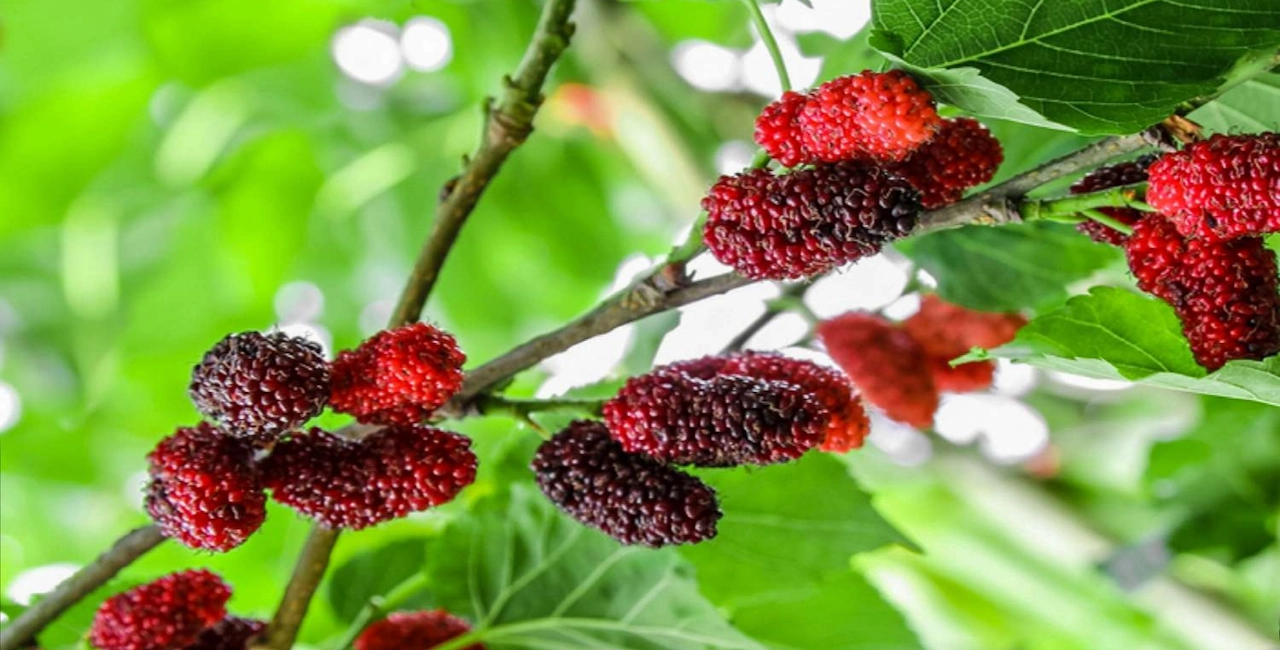Currently Empty: ₹0.00

Mulberries, the luscious and nutrient-packed fruits of the Morus tree, are small, juicy berries that have been cherished for centuries across the globe. Available in shades of black, red, and white, mulberries are not only a delicious treat but also a powerhouse of health benefits. Found in temperate and subtropical regions, these fruits hold a prominent place in culinary traditions, traditional medicine, and even sericulture, the art of silk production.
A Brief Overview
Mulberries belong to the Moraceae family and are derived from the Morus tree. The most common varieties are the white mulberry (Morus alba), red mulberry (Morus rubra), and black mulberry (Morus nigra). Originating from Asia, mulberries have spread across the world and are now cultivated in Europe, North America, and Africa. The trees are valued not just for their fruits but also for their leaves, which serve as the primary food source for silkworms.
Nutritional Profile
Mulberries are a nutritional powerhouse, packed with essential vitamins, minerals, and antioxidants. A 100-gram serving of fresh mulberries contains:
- Calories: Approximately 43
- Carbohydrates: 9.8 grams
- Protein: 1.4 grams
- Fiber: 1.7 grams
- Vitamin C: 36% of the daily recommended intake
- Iron: 10% of the daily recommended intake
- Calcium, Vitamin K, and Potassium: Present in smaller amounts
They are also rich in anthocyanins, resveratrol, and other polyphenolic compounds, which contribute to their vibrant color and potent health benefits.
Health Benefits
1. Rich in Antioxidants
Mulberries are packed with antioxidants like resveratrol, which protect the body from oxidative stress and reduce the risk of chronic diseases such as cancer and heart disease.
2. Supports Heart Health
The anthocyanins in mulberries help reduce bad cholesterol (LDL) levels and improve good cholesterol (HDL) levels, promoting cardiovascular health. Potassium in mulberries also helps regulate blood pressure.
3. Boosts Immunity
With a high vitamin C content, mulberries strengthen the immune system and help the body fight infections. They also contain alkaloids that activate macrophages, immune cells that combat pathogens.
4. Enhances Digestive Health
The dietary fiber in mulberries aids digestion, prevents constipation, and supports a healthy gut microbiome.
5. Improves Blood Circulation
Mulberries contain iron, which aids in the production of red blood cells, enhancing oxygen delivery and improving blood circulation.
6. Supports Vision
Rich in vitamin A and zeaxanthin, mulberries contribute to better eye health and reduce the risk of age-related macular degeneration.
Culinary Uses
Mulberries are versatile fruits that can be enjoyed in a variety of ways. Their sweet and tangy flavor makes them a popular ingredient in both sweet and savory dishes. Here are some common culinary uses:
- Fresh Consumption: Eaten straight off the tree, mulberries make for a refreshing snack.
- Desserts: Used in pies, tarts, cakes, and ice creams.
- Jams and Preserves: Their natural sweetness makes them ideal for jams, jellies, and syrups.
- Beverages: Mulberries are blended into smoothies, juices, and even wines.
- Dried Mulberries: These are used as a topping for cereals, yogurts, and salads or eaten as a healthy snack.
Traditional and Modern Uses
Mulberries have been a part of traditional medicine for centuries. In Ayurveda and Traditional Chinese Medicine (TCM), they are used to treat ailments like anemia, fatigue, and digestive disorders. Mulberry leaves, rich in nutrients and antioxidants, are brewed into herbal teas that aid in weight management and blood sugar control.
In modern times, mulberries are also being studied for their potential in combating neurodegenerative diseases like Alzheimer’s, thanks to their rich antioxidant profile.
Mulberries and Sericulture
The white mulberry tree (Morus alba) plays a crucial role in the silk industry. Its leaves are the primary food source for silkworms (Bombyx mori), which produce silk threads. This symbiotic relationship has made the cultivation of mulberry trees indispensable to sericulture.
Cultivation and Sustainability
Mulberry trees are hardy and adaptable, thriving in a variety of soil types and climates. They require minimal care and can withstand drought conditions, making them a sustainable crop choice. The trees also prevent soil erosion and contribute to ecological balance.
Conclusion
Mulberries are more than just delicious fruits; they are a treasure trove of nutrients and benefits. From boosting health to enriching cuisines and supporting silk production, these humble berries play a multifaceted role in human life. Whether enjoyed fresh, dried, or in a dish, mulberries continue to delight and nourish, standing as a testament to nature’s generosity.


